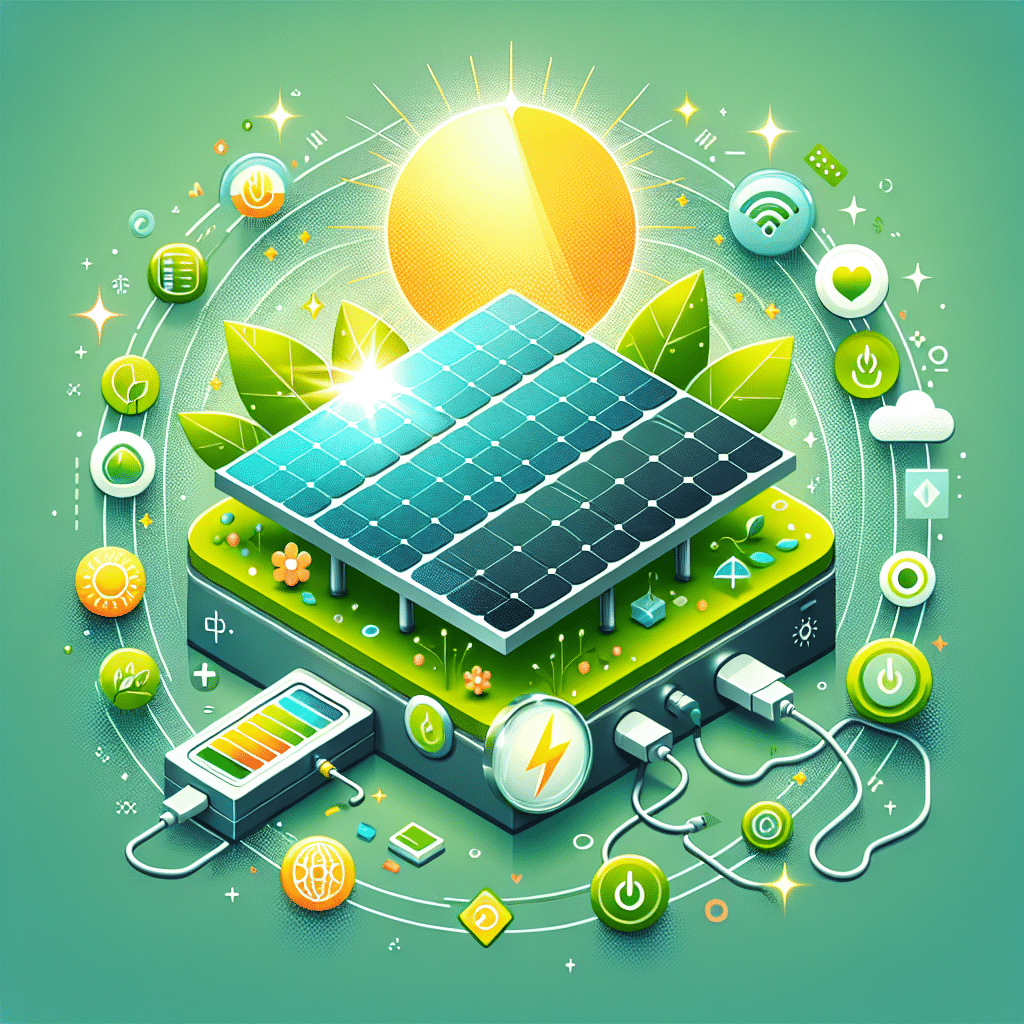Tips to Extend the Battery Life of Solar Devices
In the modern world, solar devices have gained popularity for their sustainability and efficiency. Whether it’s solar-powered chargers, lights, or other gadgets, maximizing battery life is essential for optimal performance. Here are several effective strategies to extend the life of solar device batteries.
1. Understand Battery Types
Different solar devices utilize various battery types, including lithium-ion, nickel-cadmium (NiCd), and lead-acid. Each type has unique charging and discharging characteristics. Familiarize yourself with your device’s battery type to implement proper care and maintenance protocols. For lithium-ion batteries, avoid complete discharges; for nickel-cadmium, periodic full discharges help recalibrate the battery.
2. Optimize Solar Exposure
The efficiency of solar devices directly correlates with sunlight exposure. Position your solar panels or devices toward optimal sun exposure, typically south-facing in the Northern Hemisphere and north-facing in the Southern Hemisphere. Ensure there are no obstructions like trees or buildings casting shadows. Regularly clean the solar panel surface to eliminate dust or debris that can inhibit sunlight absorption.
3. Charge Regularly
Frequent charging can help maintain battery health. Aim to recharge solar devices regularly even if they aren’t completely discharged. Many solar devices have integrated battery management systems that allow partial charging without harm. For maximum longevity, establish a routine to charge your devices during peak sunlight hours to ensure full battery capacity.
4. Monitor Battery Temperature
Temperature plays a crucial role in battery performance. Ideally, batteries should be kept at room temperature. Excessive heat can lead to battery deterioration, while extreme cold can diminish performance. If storing solar devices, opt for cool, dry places, and avoid leaving them in cars or near windows where temperatures can fluctuate significantly.
5. Keep Firmware Updated
Many solar devices, particularly those with smart functions, often receive firmware updates from manufacturers. Ensure your device is running the latest version as updates can improve energy efficiency, optimize battery management, and resolve bugs that may drain battery life. Regularly check the manufacturer’s website for updates or set your device to automatically update.
6. Use Energy-Saving Features
Many solar devices come with energy-saving features such as auto shut-off, dimming, and energy-efficient modes. Take advantage of these functions to enhance battery life. For instance, if you’re using solar lights, select settings that accommodate ambient light levels or adjust brightness to reduce energy consumption.
7. Limit Use of High-Power Features
High-power functions such as Wi-Fi, Bluetooth, or high-intensity lighting significantly consume battery energy. Limit the use of these features when not needed. Consider turning off Wi-Fi or Bluetooth on solar chargers unless you’re actively using them for data transmission. Similarly, using solar lights on lower settings can prolong nightly use.
8. Match Devices with Appropriate Solar Panels
Using the right solar panel can dramatically affect charging efficiency. If your device allows, choose a solar panel with output capabilities that match or exceed the device’s requirements. This ensures that the device gets charged efficiently and reduces the stress on the battery while charging, aiding longevity.
9. Regular Maintenance
Just like any technology, solar devices require routine maintenance. Inspect your solar panel regularly for physical damage, dirt buildup, or corrosion around connections. Clean the surfaces with appropriate materials and ensure that all connections are secure to facilitate optimal performance and prevent energy loss.
10. Disconnect When Fully Charged
Overcharging can lead to battery degradation. Most modern solar devices come equipped with built-in protections to prevent this, but if your device allows it, disconnect it from the solar panel once fully charged. This practice not only helps the battery maintain its capacity but also reduces risks of overheating and potential damage.
11. Use Proper Storage Techniques
If storing solar devices long-term, follow the manufacturer’s guidelines for battery storage. Ideally, store batteries partially charged—around 50%—to minimize stress on the battery cells. Keep the devices in a cool, dry, dark location to protect them from adverse environmental factors.
12. Utilize Battery Management Systems (BMS)
If your solar device uses a Battery Management System, familiarize yourself with its features. BMS helps monitor charge cycles and balances charging procedures, significantly extending battery life. If you’re using external batteries with your solar devices, consider incorporating a BMS for added performance and protection.
13. Avoid Frequent Deep Discharges
Deep discharging can shorten battery lifespan, particularly in lithium-ion and nickel-cadmium batteries. To promote battery health, aim for shallow discharges, ideally keeping the battery above the 20% charge mark. For devices that allow it, maintain a discharge cycle of 30% to 80% charge for optimal life span.
14. Consider Battery Replacement Options
Eventually, batteries degrade over time. Research before purchasing solar devices, looking for options with easily replaceable batteries to ensure the long-term usability of the device. If the battery does wear out, choose high-quality replacements from reputable manufacturers to maintain performance.
15. Educate Yourself on Device-Specific Guidelines
Each solar device can come with unique characteristics and maintenance recommendations. Carefully read user manuals and guidelines provided by manufacturers. Understanding the specific usage, care, and best practices associated with your device can dramatically enhance its performance and battery life.
Implementing these tips will significantly enhance the battery life and efficiency of your solar devices, ensuring they remain functional and effective for years to come.
